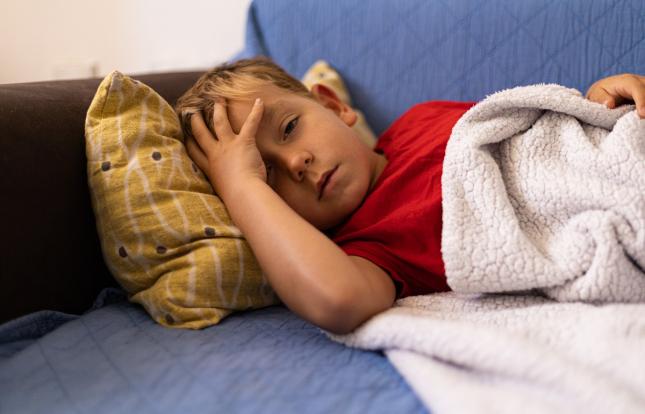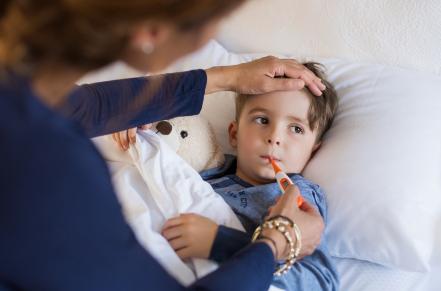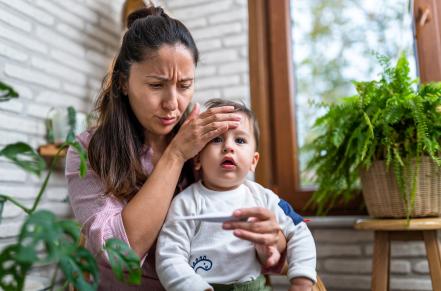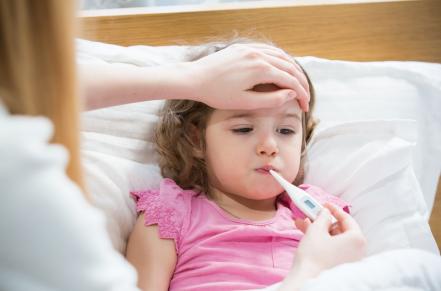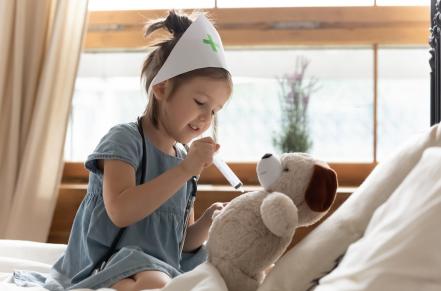Children in child care settings are often sick with upper respiratory infections. The rates of these infections are higher in the winter months, although they can occur any time of the year. Some side effects of upper respiratory infections, such as colds or flu, are bronchitis and pneumonia.
What is the difference between bronchitis and pneumonia?
Bronchitis is most often a bacterial or viral infection that causes swelling of the tubes (bronchioles) leading to the lungs. Pneumonia is an acute or chronic disease marked by inflammation of the lungs and is caused by viruses, bacteria, other organisms and sometimes by physical or chemical irritants. A diagnosis of “double pneumonia” means both lungs have been affected. “Walking pneumonia” means that the illness is not serious enough to require hospitalization of the child or adult; it is generally caused by a germ called mycoplasma. The symptoms of bronchitis and pneumonia are similar and may include fever, headache, cough that brings up thick green or yellow mucus, chills, looking ill and tired, fast, noisy, or difficulty breathing, wheezing, tightness or pain in the chest. Pneumonia that is deep in the lungs may also cause abdominal pain and vomiting. Any child, especially young infants, with these symptoms should be seen by a health care provider.
How serious are bronchitis and pneumonia?
Both conditions are more serious if a child has a chronic health condition or if the condition is caused by a bacteria, in which case antibiotics are the treatment of choice. When pneumonia is caused by bacteria, an infected child usually becomes sick relatively quickly and experiences the sudden onset of high fever and rapid breathing When these infections are caused by a virus, such as RSV, adenovirous, or influenza, antibiotics will not help and most often the infection will have to run its course. Bronchitis and pneumonia both require the care and supervision of a health care professional, as children with pneumonia can become sick enough to require hospitalization.
When can children return to child care?
With treatment, most types of bacterial pneumonia can be cured within 1 to 2 weeks. Viral pneumonia may last longer. Children recovering from bronchitis or pneumonia can return to the child care program provided they are feeling well enough to participate, are free of fever, and have been seen by a health care professional. Bronchitis and pneumonia are not directly contagious, but the germ that caused the original cold or upper respiratory infection may be. This is why some children (and staff) in a child care setting may get very sick from the same respiratory germ, others just get mildly ill and still others don’t get ill at all.
Can bronchitis and pneumonia be prevented?
Upper respiratory infections that could lead to bronchitis or pneumonia are difficult to totally prevent in child care settings. Reducing exposure to colds and flu by frequent hand washing and environmental cleanliness and sanitation are the first and most important line of defense. Childhood immunizations such as Hib, acellular pertussis (the aP in DTaP), Pneumococcal conjugate vaccine (PCV), and influenza vaccine (especially for staff) can provide some protection against pneumonia. Getting plenty of rest and fresh air, eating healthy foods, exercising and avoiding secondhand smoke will also keep young bodies strong.

